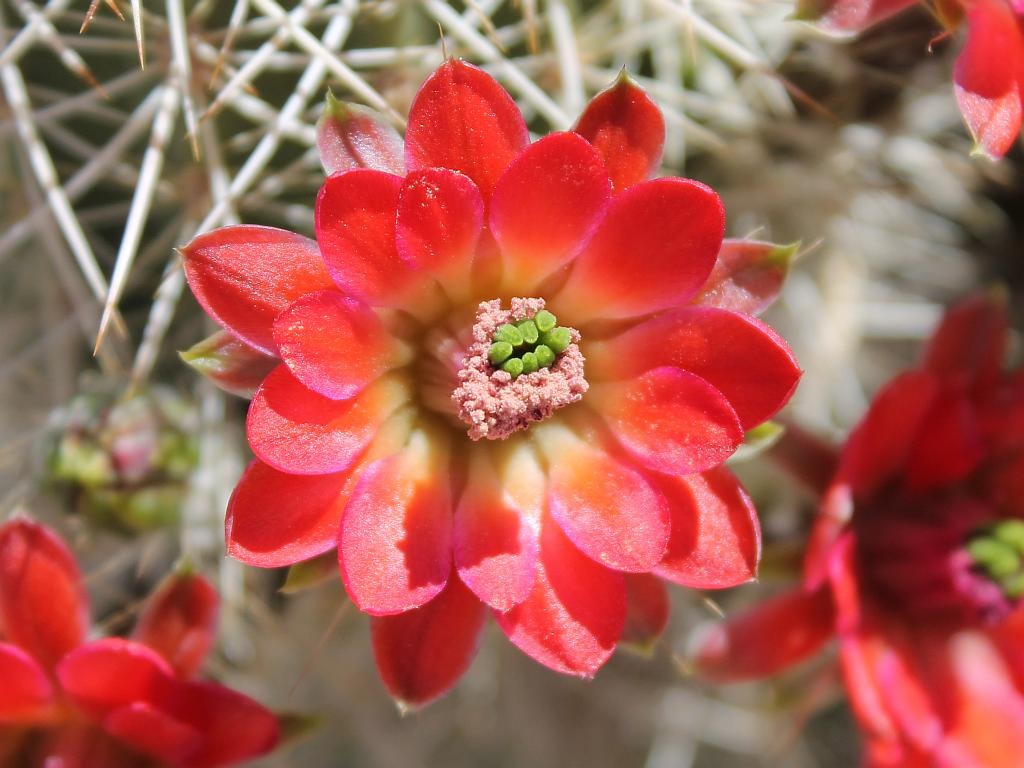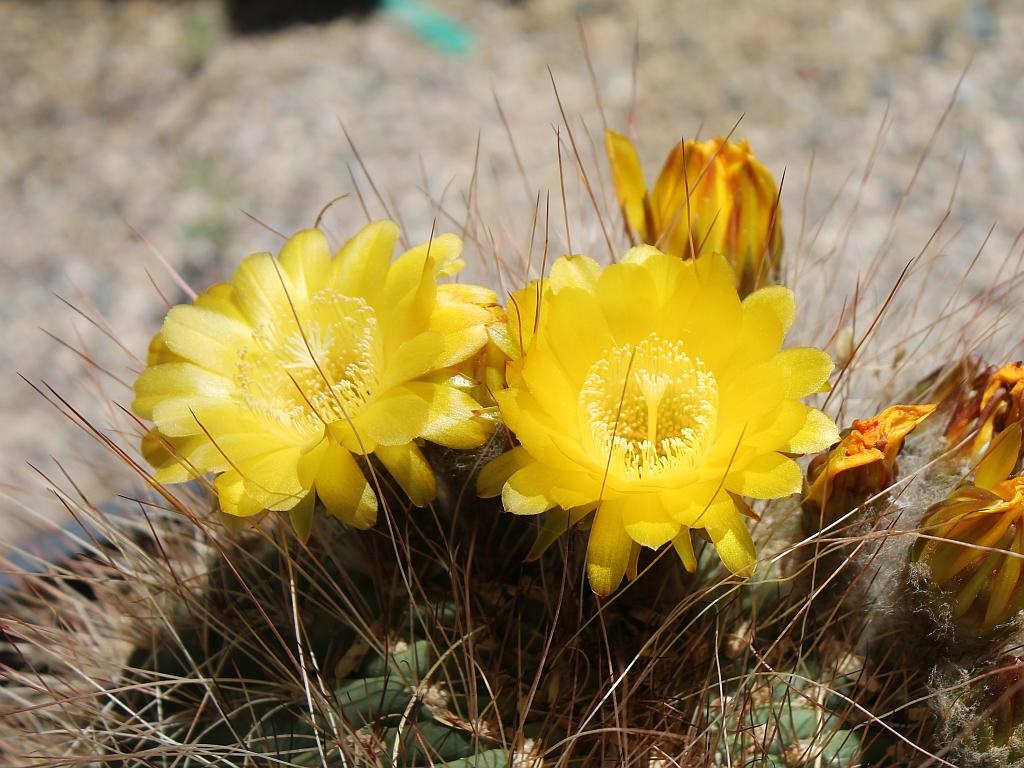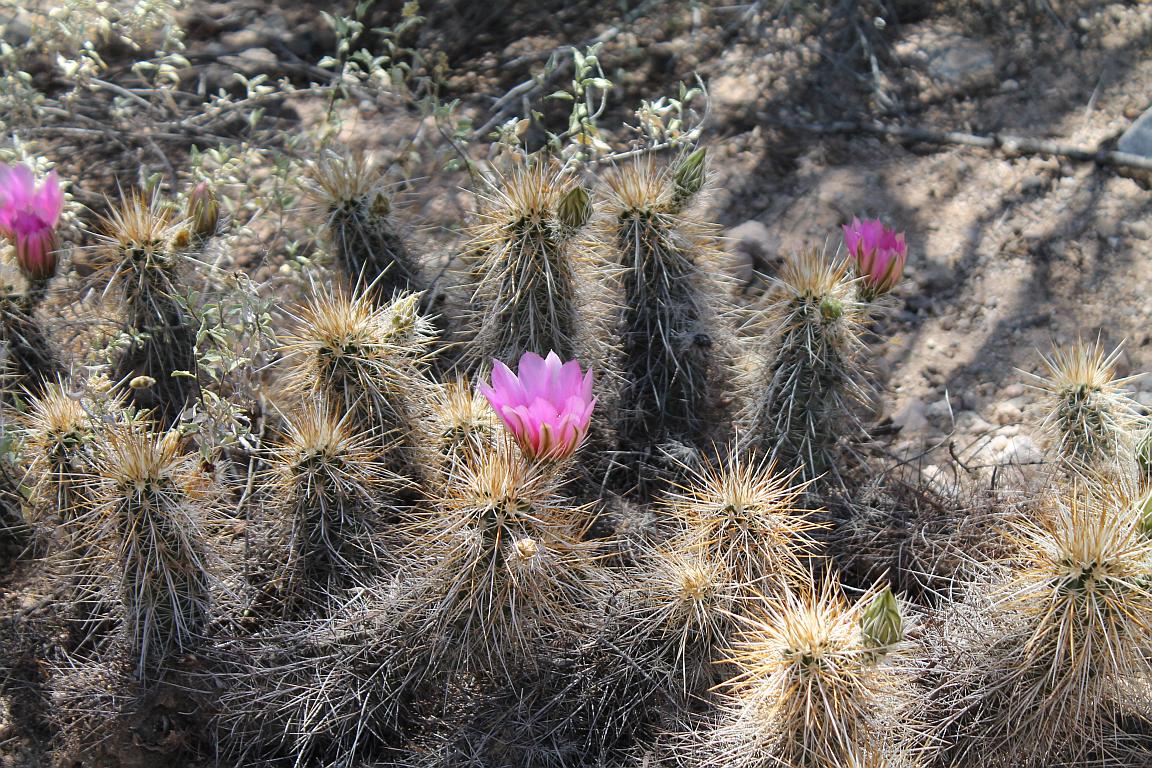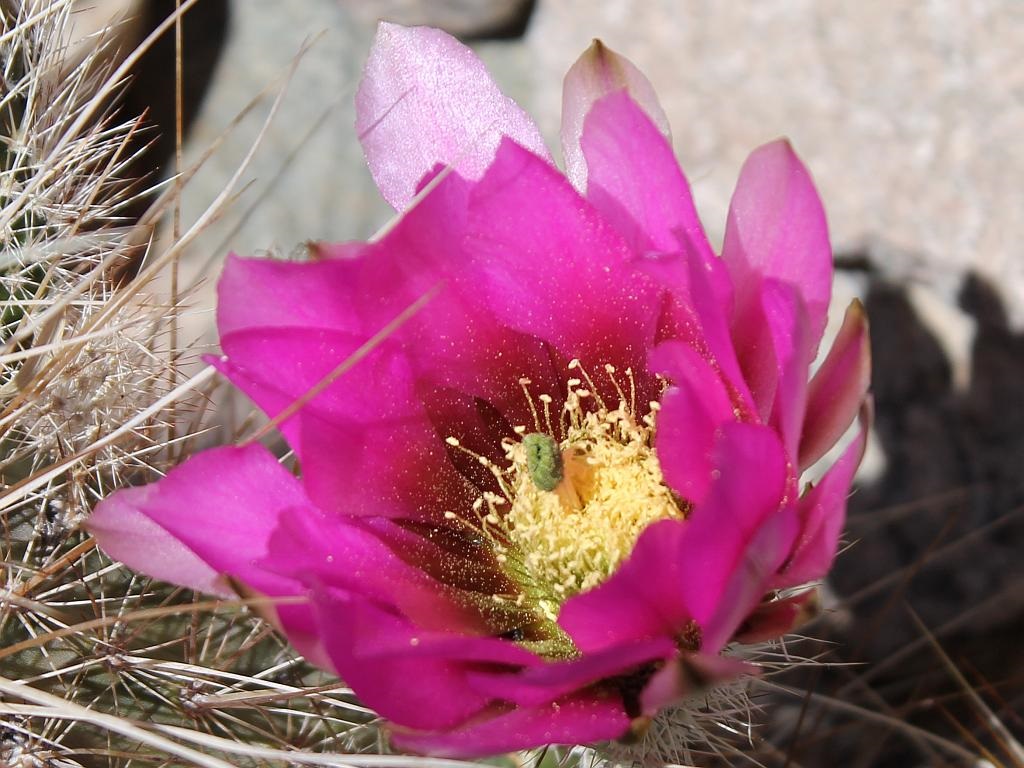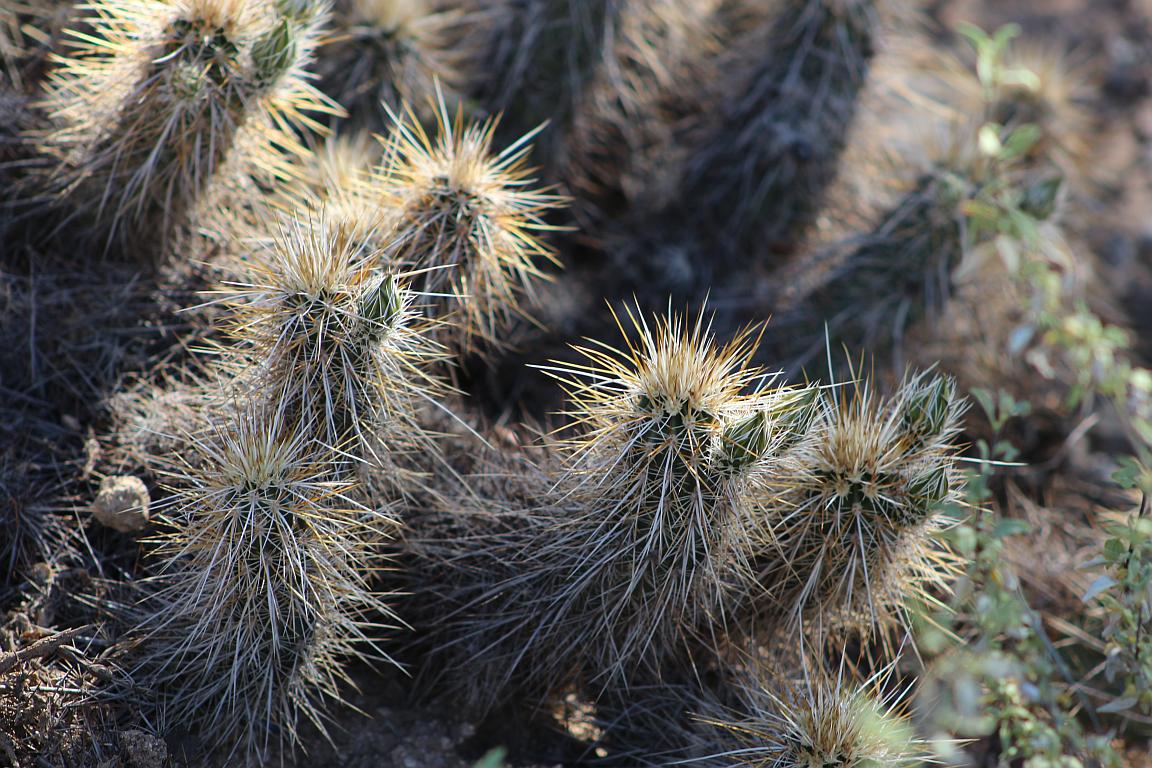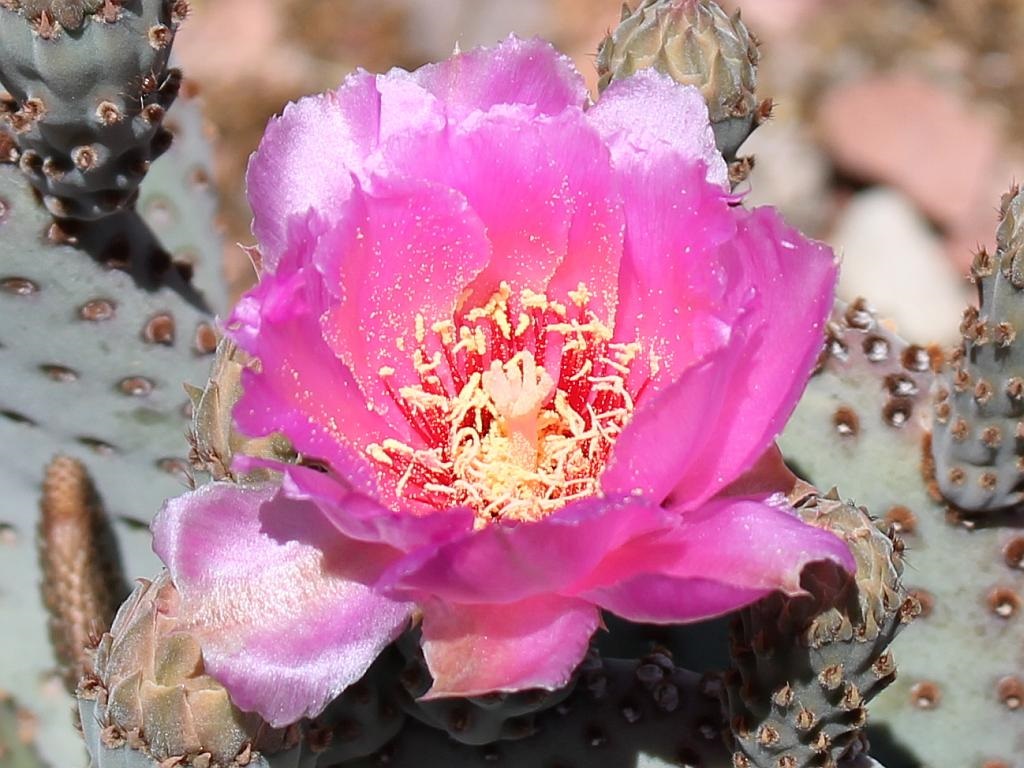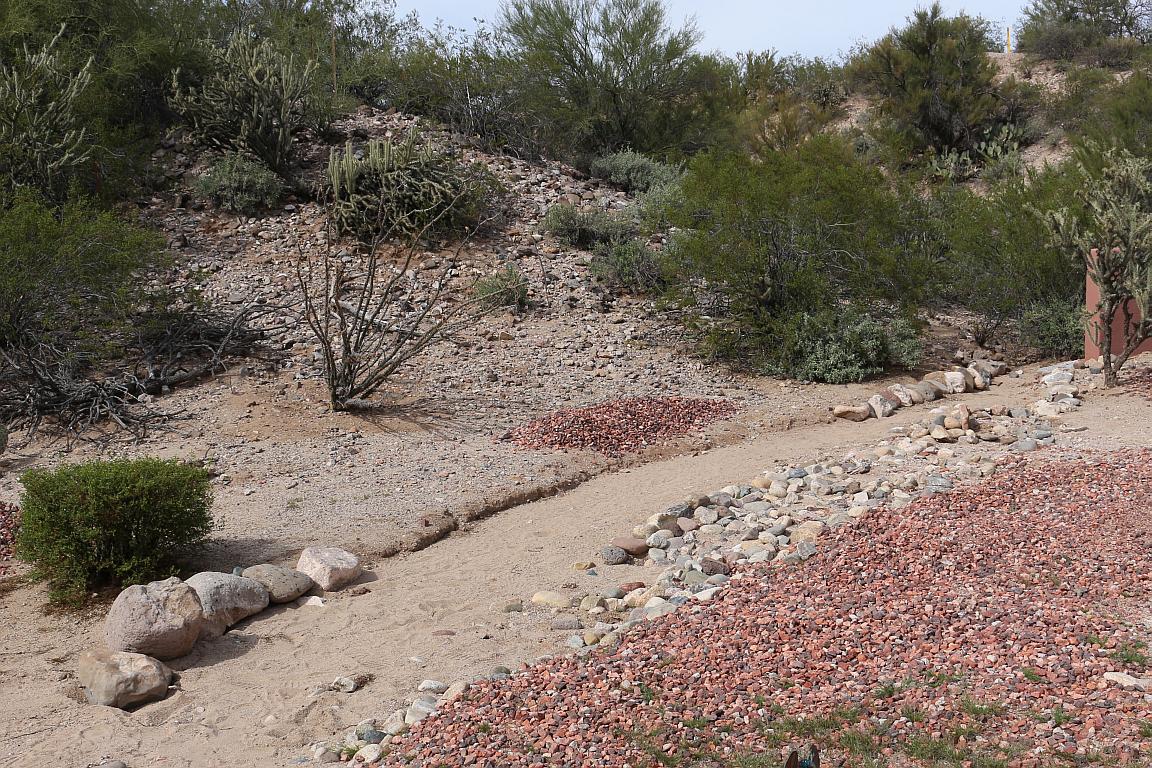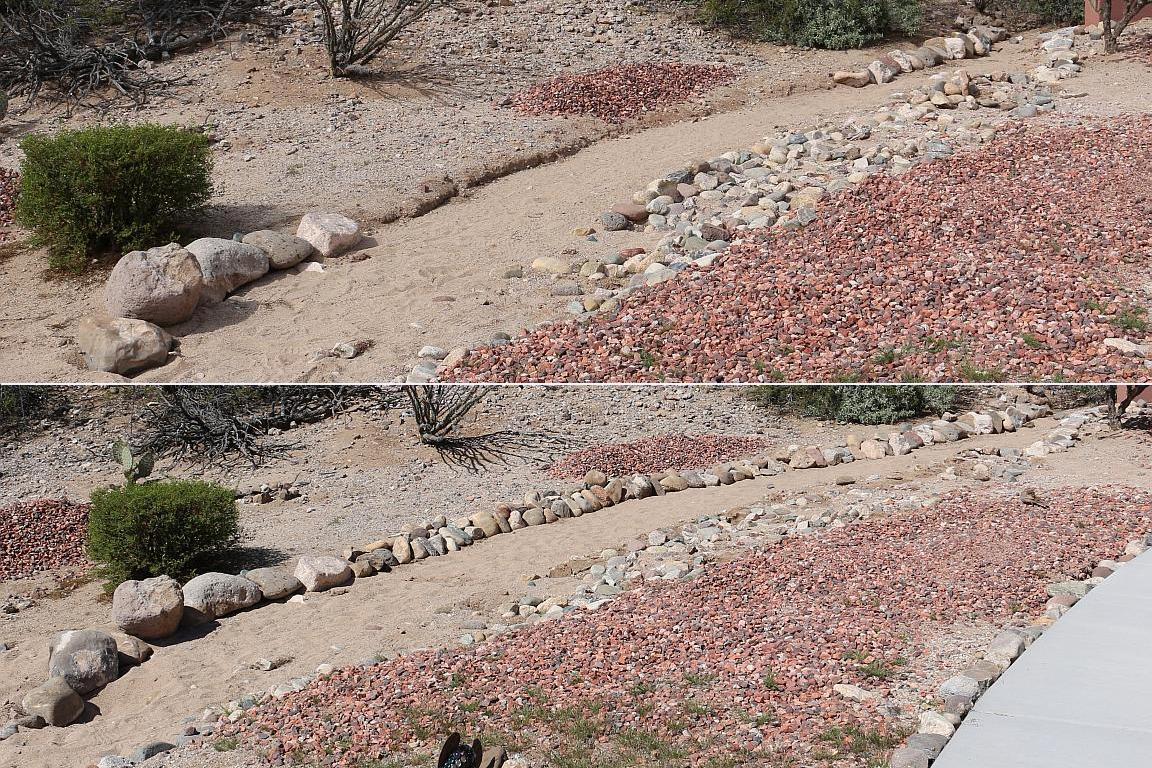Bob and I went to a local nursery today looking for replacements for some failed sage brush in the courtyard. We finally bought some bottle brush bushes in five gallon pots that we will put in the ground in the days to come.
While we were there, I (of course) took some photos of the flowers that were opened on various cacti and other xeriscape flowering plants. I have been posting photos of pink flowers here this spring, since the pink ones seem to open first. At the nursery, there were other colors, too, most noticeably the red Claret Cup Hedgehog flowers and some bright yellow flowers on a barrel cactus that had neither its nickname nor a binomial designation, so it is a generic yellow-flower-producing barrel cactus at this point. Click on either image to enlarge.
We also bought another echinocereus cactus similar to hedgehogs that we have, that will produce red flowers. There are numerous flower buds on the cactus that will likely open soon. We need to pick a place to plant this cactus but will probably wait until after the flowers com to put it in the ground.

